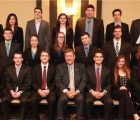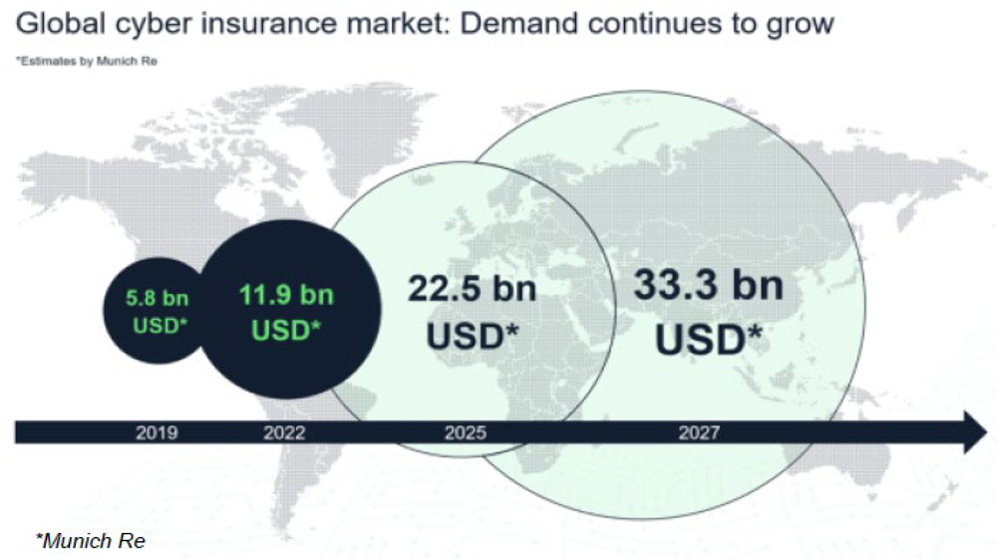 The Creator’s Code: The Six Essential Skills of Extraordinary Entrepreneurs By Amy Wilkinson, Simon & Schuster, 2015, 240 pp, $20.37.
The Creator’s Code: The Six Essential Skills of Extraordinary Entrepreneurs By Amy Wilkinson, Simon & Schuster, 2015, 240 pp, $20.37.
Where do great ideas come from? Amy Wilkinson opens The Creator’s Code with a story about Kevin Plank, who dreamed of playing college football. Although no Division I schools recruited him, Plank won a walk-on slot as a fullback at the University of Maryland. Smaller and less athletically gifted than his teammates, he searched for anything that could give him a competitive edge — and he found one, in sweat.
Plank perspired. A lot. One day, he put his sweat-soaked t-shirt on a scale after practice and found that it added three pounds to his weight — three pounds he couldn’t afford. So, after visiting a local fabric store and a tailor, Plank dressed himself in a t-shirt that weighed only seven ounces when wet. The shirt became the core product of Under Armour, the company that Plank went on to found.
Wilkinson, a lecturer at the Stanford Graduate School of Business, took a methodical approach to stories like Kevin Plank’s, spending five years searching for the keys to entrepreneurial success. She began by interviewing more than 200 entrepreneurs who started companies that each generate more than $100 million in annual revenue.
Using the grounded theory method of quantitative analysis, Wilkinson had the interviews transcribed, and she analyzed and coded the transcripts for common themes. She also scrutinized some 5,000 other pieces of data, including academic studies. In the end, she boiled down all her research into advice short enough to fit on a single index card: a set of six key skills that all the entrepreneurs relied on. At 200 pages long, The Creator’s Code is a concise guide to using the six skills, as well as a behind-the-scenes tour of the founding of some of the most innovative companies of the last decade, including Airbnb, Tesla Motors and Chipotle.
Wilkinson stresses that these fundamental skills are just as handy for people working inside companies as they are for people starting new ones. “You could be in a large corporation,” she says, “you could be in government, and you can still create new ideas, new initiatives, new projects.”
“If you want to use a sports analogy,” Wilkinson says, “I went out and interviewed the equivalent of Olympic athletes, people who were just exceptional performers. And I tried to really study, in detail, what they did, and what they had in common. Probably few of us are going to play at the Olympic level … but they’re still skills that we all want to develop, to be more effective.” According to Wilkinson, entrepreneurs “don’t need an MBA, millions of dollars, perfect timing or permission.” What they do need is to learn how to be creative.
That creativity starts with finding a “gap,” Wilkinson’s term for a problem that requires a solution. She defines three kinds of thinkers who come up with fresh solutions: sunbirds, architects and integrators.
Wilkinson stresses that these fundamental skills are just as handy for people working inside companies as they are for people starting new ones.
Sunbirds “transport solutions that work in one area and apply them to another, often with a twist.” One member of the Sunbird tribe is Pierre Omidyar, the software engineer who created eBay with the insight that traditional yard sales could take place online. Wilkinson also interviewed Dean Kamen, inventor of the Segway, who borrowed a concept from the design of helicopter blades to build a better heart stent. Kamen’s secret, he says, is finding “someone who has solved the problem in another field … and then [I] just tweak it a little bit.”
Sara Blakely, who invented Spanx body shapers because she wanted the smooth look of pantyhose underneath her clothes, but without the telltale seams on the feet, is a perfect example of an Architect. Wilkinson describes Architects as “problem finders [who] identify friction points, bottlenecks and complications.” For architects, defining a problem is half the job. They then craft a new solution from the ground up.
Integrators combine both approaches. The idea for Chipotle came about when Steve Ells, a graduate of the Culinary Institute of America, began to wonder why he couldn’t get a quick meal that was also delicious, combining the convenience of fast food with the taste of quality ingredients. Other examples of combining opposites to come up with a new concept include products like the luxury SUV, shabby chic decorating and travel packages that offer “rugged comfort,” a category that blends adventure with soft beds.
It’s important for creators to learn how to “fail wisely.”
To Wilkinson, the key to finding a gap is being curious. “You really want to ask a huge number of questions,” she explains. “And keep asking questions. Because the curiosity factor — when you’re 20, and 30, and 40, and 70, it keeps you fresh in the economy.”
Identifying a problem and coming up with a novel solution is just the beginning. At some point, says Wilkinson, it’s important for creators to learn how to “fail wisely.” The key to doing this, she says, is placing small bets. “Creators test ideas in low-risk experiments,” Wilkinson explains, “and by taking small risks, they avoid catastrophic mistakes.”
Sara Blakely, the Spanx founder, learned this lesson as a child. Every night at the dinner table, she remembers her father asking, “What have you failed at today?” The purpose was not to celebrate failure, but to replace a perfectionist outlook with a view of work as an inherently trial-and-error process, much like arranging the furniture in a new house.
When it comes to failing, Wilkinson practices what she preaches. “One of the ways to try to step back from [perfectionism] and to fail wisely, is to adopt a failure ratio,” she says. “As an author, I try to do this. I set my own ratio that says, ’Okay, if there are 10 things, I’m not going to get 10 out of 10 right. I’m going to get three out of ten wrong, I’ll fail 30% of the time.’ You’re testing in order to be learning.”
Besides failing wisely, Wilkinson found that creators often fail together — the concept behind another of the six skills, “network minds.” According to her research, bringing together teams of people and collaborating are indispensible to starting successful enterprises. Some “flash teams” of experts, like those who create a Hollywood movie or construct a skyscraper, might come together for only one project before breaking apart. Another way to bring together different perspectives on a problem is to set up a prize competition. (Historical fun fact: What do fire extinguishers, canned goods and margarine all have in common? They were created during prize competitions, according to Wilkinson).
“If you want to solve problems you haven’t solved before,” says Wilkinson, “you have to bring other brain power to help you. This is the complexity of information, the vast quantity of it now. No single person can digest or figure that stuff out. You have to network minds, and you have to be able to work collaboratively.”
Everybody thinks that in order to create and scale an idea, you have to be in your 20s.
It’s really far from the truth.
To Wilkinson, one of the most surprising things about writing the book has been finding out who’s interested in the six skills. “The surprise to me,” she says, “is that there’s a big education audience for it.” She notes that two trends in education today — a drive for perfect test scores and a focus on testing the individual — run counter to the skills that build new enterprises.
“Right now, if people are collaborating in school, we call that cheating,” she says. “And yet, the entrepreneurial economy is very collaborative, people winning together.” She also notes that “[we want] perfection, we want people to get a four-point grade average … then we launch people into an economy in which getting it wrong some of the time is certainly what’s going to happen … and probably what you want to have happen, as long as people are learning through it.”
Wilkinson was also struck by some of the data her research turned up. “I had thought this was a next generation skill set, meaning people under the age of 40 … would be the best creators. But I found there was no age criteria. I don’t believe it’s a demographic, I think it’s a psycho-graphic, meaning, are you open-minded? It’s a mindset and a skill set that carries people forward at any age.”
In reality, Wilkinson says, “The data right now is also showing that baby boomers are creating companies at much faster rates than their millennial children are … millennials are, in fact, risk averse. You hear about Mark Zuckerberg, the 20-something-year-old in Silicon Valley who wears a hoodie. Created Facebook. And then everybody thinks that in order to create and scale an idea, you have to be in your 20s. It’s really far from the truth.”
Based on her research, Wilkinson believes the workplace is changing for everyone, entrepreneur and employee alike. “I believe we are all becoming increasingly responsible for our own careers,” she says. “If we move into a non-credentialed economy, it does not really matter if you’re going to Ivy League schools. What really matters is that you can create and scale ideas.”
“If people are collaborating in school, we call that cheating … and yet, the entrepreneurial economy is very collaborative, people winning together.”
While she set out to create career advice for others, the project has changed the way that Wilkinson sees her own career. “I feel like this research,” she says, “has sort of bolstered my own confidence in the fact that I can find my own pathway.” It’s also changed the way she views the frustrations and inconveniences of everyday life, from sitting in traffic jams to waiting in long lines.
“I used to be like, oh, that’s a problem, that’s so irritating,” she says. “Now, whenever I get that kind of a reaction, I immediately flip it around and think, ’Okay, where’s the opportunity here?’ Because wherever there’s a pain point … that’s a huge opportunity to solve it, to make it better.”
Sometimes, it turns out, an idea that passes the entrepreneurial sniff test is as close as the sweaty t-shirt on your back.
Laurie McClellan is a freelance writer living in Arlington, Virginia.
Thinking Creatively
 One key to coming up with new ideas is the ability to see pieces of information independently. Wilkinson describes an experiment called “The Candle Problem,” in which researchers hand the participants a candle, a box of matches and a box of thumbtacks. The goal is to attach the candle to the wall using only those items. Participants discover the right answer only about 25% of the time.
One key to coming up with new ideas is the ability to see pieces of information independently. Wilkinson describes an experiment called “The Candle Problem,” in which researchers hand the participants a candle, a box of matches and a box of thumbtacks. The goal is to attach the candle to the wall using only those items. Participants discover the right answer only about 25% of the time.
 Hint: When the researchers change the experiment by underlining certain words in the directions, the solution rate doubles to about 50 percent. The new directions read, “There is a candle, a box of tacks, and a book of matches.”
Hint: When the researchers change the experiment by underlining certain words in the directions, the solution rate doubles to about 50 percent. The new directions read, “There is a candle, a box of tacks, and a book of matches.”
 Solution: Remove the tacks from the box. Use the tacks to attach the box to the wall, so that it forms a shelf. Set the candle on the shelf.
Solution: Remove the tacks from the box. Use the tacks to attach the box to the wall, so that it forms a shelf. Set the candle on the shelf.











